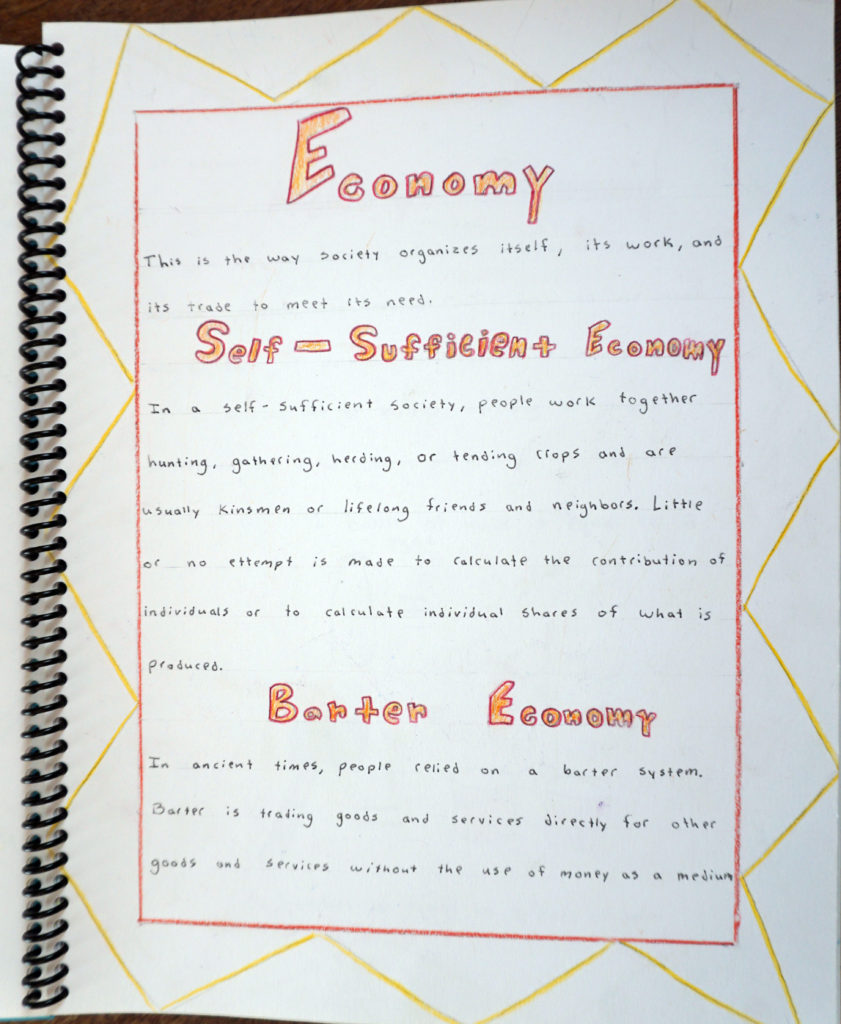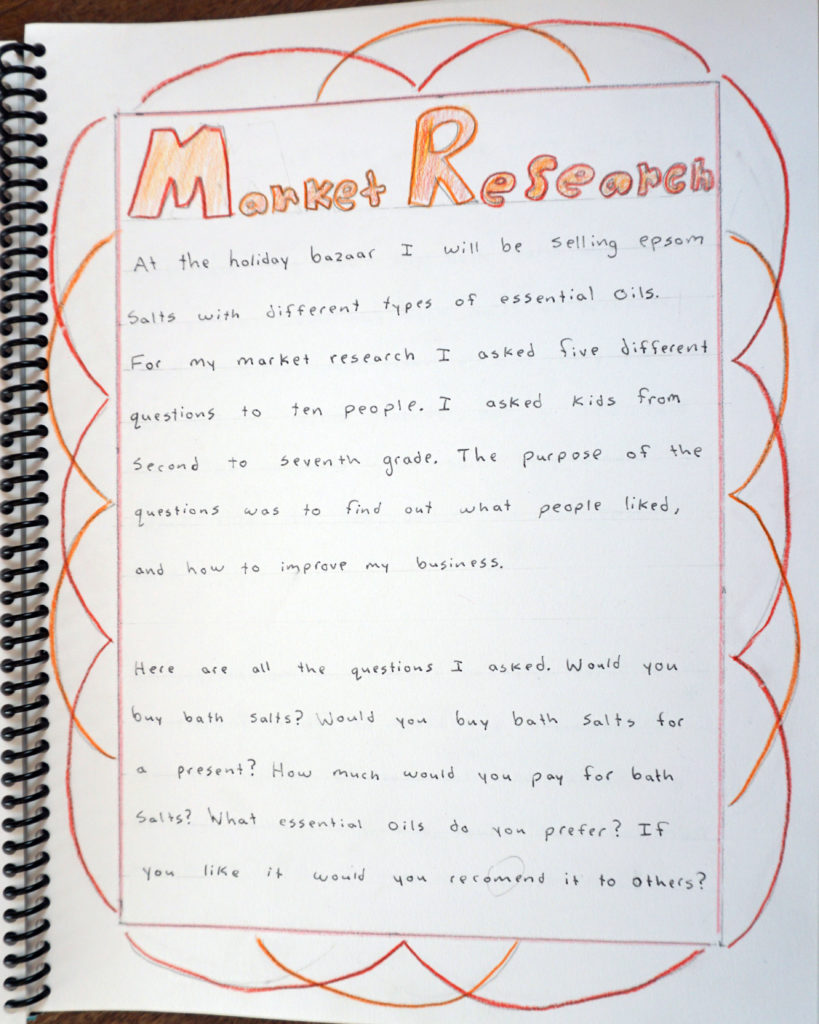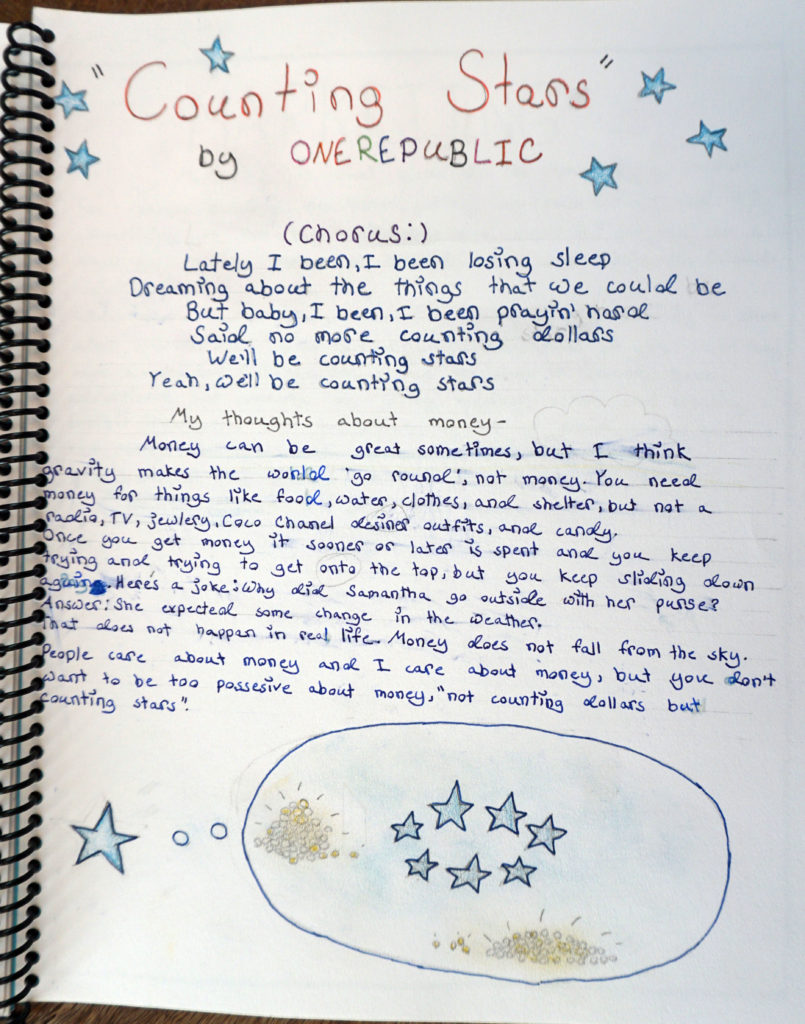The sixth grade at my school is in the midst of their business math block. I keep coming across them in the hallway discussing business ideas, polling various students about market demand and when I had a meeting in that classroom the other day the chalkboard was absolutely FULL of fraction/decimal/percent conversions.
It’s been reminding me how much I just LOVE that business math block. I’ve been meaning to write up a curriculum guide for it, but just haven’t gotten around to it — it might have to wait until the next time I teach sixth grade.

I’ve written a few posts about business math, most of them from my second class (My current class is my fourth! Wow, I’ve been doing this a long time!) We had so much fun!
This post is a basic overview of at least the beginning of the block. This one picks up where the last one left off and describes some of the extra fun supplementary activities we did. (That class LOVED creating a class currency that we named the Bongo and all through the block they brought things in to buy and sell.)
I’ve shared my business math block test on this site before. Fill in your email below and you’ll get an email with a download link.
6th Grade Business Math Block Test
Fill in your email address and you'll receive an email with a link to download.
As I look back through those posts, though, I see something missing. Those poor students, it must have been the third time around that I figured out how much more engaging the block would be if I told biography stories along the way. (Actually, I think it was during my demo teaching at my current school that I decided it would be a good idea to tell a story to the sixth grade in their business math block.)

Anyway, I turned to the business expert in my family, my mom, and asked her which businesses or business men had interesting stories. These were her suggestions.
Ben and Jerry
These guys have a great story about how they got their start in Vermont. They can bring some pretty valuable business lessons to your students.
- Ben and Jerry loved ice cream, but they weren’t great business men. They were pretty bad at managing their money and the story goes that one day they closed the shop for the day so they could pay the bills. The sign on the door read, “We’re closed today because we’re figuring it all out.” They soon hired someone to help with the parts of the business they could not manage.
- Ben and Jerry’s is famous for making philanthropy a key part of their business model. Early on they created the Ben and Jerry’s Foundation so they could give back.
- They’re also famous for treating their employees really well. Every employee is entitled to three pints of ice cream per day and they provide benefits like gym memberships (good thing!), daycare, profit-sharing and college tuition support.
- They started out thinking about selling bagels, but switched to ice cream. It was good to talk through the two business ideas with the class and brainstorm the challenges and benefits of each.
I had the students write nicely decorated business letters to Ben and Jerry’s — of course they were hoping for some ice cream coupons. They didn’t get coupons but they wrote us a nice letter back and included an ice cream cone refrigerator magnet.
Warren Buffett
I loved telling the story of Warren Buffett! Here are some of the good things to learn from his story.
- Buffett got started young — even younger than your sixth graders. He started out with a paper route and impressed friends and family with his ability to add up large sums in his head. (He famously filed a tax return this year and claimed his bicycle as a $35 deduction.)
- The best story, though, is about how he used to walk along the beach in the summertime. He bought cold drinks at the shop a few blocks away and dragged them along in a wagon, selling them to hot beachgoers. Along the way he picked up and collected bottle caps. When he got home he laid them all out, sorted them and counted them. When I told the sixth graders I told them that Warren’s mother didn’t understand his fascination with the bottle caps and wondered what he was doing. I asked the sixth graders if they had an idea. Sure enough, some ambitious little businessman guessed it — he was doing market research!
- In 2006, Buffett announced that he was giving away all of his fortune to charity. A large portion of it went to the Bill and Melinda Gates Foundation.
- Buffett has a reputation for remaining remarkably down to earth. He doesn’t own a smart phone and he still lives in the starter home he and his wife bought in 1958.
- “If you really want to measure how rich you are, it’s how many people love you — or really, whether the people you care about loving you love you.”

Richard Branson
Branson started out making magazines and was bit by the business bug. He then opened a record store he called Virgin Records. He built up the Virgin brand, ultimately creating Virgin Airlines and now Virgin Galactic.
Branson gives us a story of someone who became successful despite his own struggles. He had a hard time in school and is dyslexic. Ultimately he dropped out of school.
I think these three are the ones I told in class (because there is so much content to bring in the block, I think I stuck to just the three biographies.) You could certainly teach the entire block through biographies, though, and I’m sure there are a lot of other great stories out there. I told a colleague that if I was doing the block again I would research Elon Musk — there is something so fascinating about him!
As I mentioned, I haven’t put together my curriculum guide for business math, but I do have guides for many of the other 6th grade blocks. I’ve got Physics, Geometry, Rocks and Minerals and Astronomy. Hopefully I’ll get to the rest eventually!




What a great idea to use biography! Reading about Ben and Jerry giving their staff ice-cream took me back to my own very first job – working in a fish and chip shop for a couple of hours 3 nights per week when I was 14. I was paid 5o cents an hour (about $6 per week) and a portion of chips (fries) per night! Your post has really inspired me, and in a flash I thought of Anita Roddick, founder of The Body Shop, as another great biography. Thanks, Meredith 🙂
ps – and thank you for the Elon Musk suggestion. That will really fire up my son’s imagination.
I’ve recently learned that the sixth grade teacher whose class I take for math practice classes three days a week, is not planning to teach a business math block. Therefore, in addition to practicing all their math skills, and trying to bring together the very disparate skill levels of this small class, I need to teach how to figure percents. Would you also try to include the more Main Lesson – type material into our track classes? We have 3, 45-minute lessons a week.